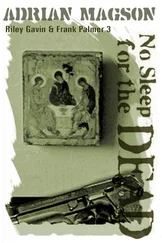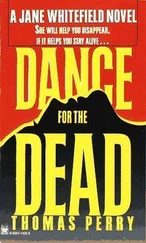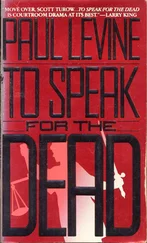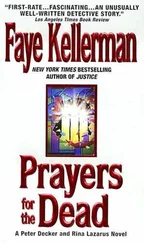Nevertheless, the commander walked over and greeted Pendergast cordially, shaking his hand. “I got your message,” he said, taking a seat at the table. “I understand you have some more work for us.”
“I’m afraid so. But first, I have something I would like to show you — to get your thoughts.”
Nice damage control , Coldmoon thought.
Pendergast glanced over at the medical examiner. “Dr. Fauchet. I didn’t expect to see you, but I must say it’s a pleasure.”
“I caught a ride with Commander Grove,” she said. “I hope you don’t mind.”
“Not in the least — in fact, it’s fortuitous. Though I fear I might be keeping you from your work.”
“I’m on vacation.”
Pendergast raised his eyebrows. “Indeed?”
“Yes. Not that I’m going anywhere special,” she added quickly.
Coldmoon listened to this exchange. Fauchet — the clipped, efficient young medical examiner — using a vacation day to check on the progress of a criminal case? She seemed oddly self-conscious. If he didn’t know better, he’d have guessed the woman had a crush on someone. Maybe himself? He glanced over and saw her gazing at Pendergast. Nope, wasn’t him.
“I’d value your thoughts as well,” he told Fauchet, to her evident pleasure and confusion.
He rose to his feet and strolled over to the rear wall, where the two large corkboards now held three-by-five cards, blue string, and photographs. The one on the left contained the index cards for each of the three recent homicides, arranged chronologically in a column. The other corkboard held one card for each of the suicide/homicides Brokenhearts had visited, along with photos of the victims, brief biographies, and photocopies of his notes to them. A series of parallel blue lines linked each recent Miami killing to the card representing the grave to which it corresponded. Below the three right-hand cards were two others, one for Laurie Winters and another for Jasmine Oriol.
Pendergast glanced about the table. “There comes a moment when every investigation reaches a tipping point. Thanks to your efforts—” he nodded at Fauchet and Grove — “I believe we’ve reached that point.”
This rather dramatic announcement caused the tension in the dead air of the room to ratchet up.
He moved toward the corkboards, pulling a gold pen from his pocket as he did so.
“Let us start with the three current homicides: Felice Montera, Jenny Rosen, and Louisa May Abernathy, aka Misty Carpenter.” As he spoke, he touched his pen to each of the index cards. “They are linked to three eleven-year-old suicides: Elise Baxter, Agatha Flayley, and Mary Adler.” More touchings of the pen. “I have always believed that these homicides dressed up as suicides are crucial to understanding the new murders.”

“But how?” Commander Grove asked. “I mean, they’re all over the map.”
“But are they?” Pendergast said. “The main investigative thrust has been naturally focused on the recent murders in Miami Beach — in order to find and stop the killer. The older killings have been evidence, used to flesh out the impetus that’s driving the current-day killer. Why put this heart on this grave? What connection does, say, Felice Montera have to Elise Baxter, or Jenny Rosen to Agatha Flayley?”
Pendergast looked around the table. “And therein lies a logical flaw. The investigation has focused on the relation between the new killings and the old — when in fact there is no relationship. Instead, we should concern ourselves with the internal relation that exists among the eleven-year-old murders themselves .”
He walked past the corkboards to the maps, stopping at a large one of Greater Miami, on which all the relevant locations had been marked. He turned to Fauchet. “What does this map resemble, Dr. Fauchet? Besides the obvious, I mean.”
She paused before answering. “A... well, a pincushion.”
“Precisely! It’s busy with pushpins. Different locations and different colors: red for the new murder sites, green for their domiciles, blue for the graveyards, yellow for the residences of the old murder/suicides. Not to mention orange for Winters and Oriol, who thankfully have not been paired with contemporary murders.” He waved at the map. “Does anyone see any pattern? Any relevance? Any clue to what agenda Mister Brokenhearts — whom we know to be an intelligent, organized killer — might have been pursuing?”
Silence all around.
“Understandably not. Because I believe the pattern lies elsewhere — with those who were murdered eleven years ago.” He pointed at the right-hand corkboard. “Baxter, Flayley, Adler, Winters, and Oriol.”
Fauchet frowned. “But they seem even more random. As Commander Grove said, they’re literally all over the map.”
“They seem random because we’ve been operating on a false assumption. We’ve been preoccupied with their connection to Mister Brokenhearts, and whether those decade-old deaths were suicides or homicides. Nobody stopped to examine one basic point of evidence: the dates those women died.”
Now Pendergast moved to another, even larger map: of the eastern seaboard of the United States. He grabbed a handful of black pushpins from a nearby tray. “Let’s examine them, not in the order the hearts were left on their graves, but in the order that they were killed .” He began fixing the pins into position. “Jasmine Oriol, who died eleven years and ten months ago just south of Savannah, Georgia. Mary Adler, who died eleven years and eight months ago in Rocky Mount, North Carolina. Laurie Winters, eleven years and six months ago, just north of DC in Bethesda, Maryland. And Elise Baxter, who died in Katahdin, Maine — almost exactly eleven years and four months ago.” He stepped aside.
“My God,” Grove said, staring at the map, mouth agape. “It’s a trail. The killer left a goddamned trail! ”
“Right to the Canadian border,” said Coldmoon, wondering when Pendergast had figured this out. “With each murder exactly two months apart.”
“There’s something else interesting about these murders,” Pendergast said. He placed his finger beside the southernmost pushpin — Oriol — then slid it slowly up to the northernmost: Baxter.
“All the deaths took place along I-95,” said Coldmoon.
Pendergast nodded. “Not only that, but they’re roughly equidistant from each other.” He paused. “So what do we have? Killings done in the same way: strangulation fashioned to look like suicide. Killings separated from each other by equivalent degrees of space and time. Killings that follow an obvious route: mile for mile, from one end to the other, Interstate 95 is the most heavily traveled road in America.”
He turned toward the group at the table. “I submit to you that, when viewed in such a manner, this series of crimes is almost painful in its regularity. This killer — or killers — was following a careful plan. A deliberate plan. It’s almost as if he wanted law enforcement to notice the pattern.”
“But you’ve forgotten one,” Coldmoon said.
Something almost like a smile flitted across Pendergast’s face. “Not forgotten, Agent Coldmoon — just withheld for the moment.” He picked up one more pushpin, pressed it into the map. “Agatha Flayley, the last of the suicide/murders: killed in Ithaca, New York, just eleven years ago. Two hundred miles from I-95. And with a different MO.” And with this he, too, took a seat at the table.
There was silence for a moment.
“I don’t understand,” Grove said. “You just laid out a flawless pattern — and then, with this Flayley killing, turned it on its head.”
Читать дальше













